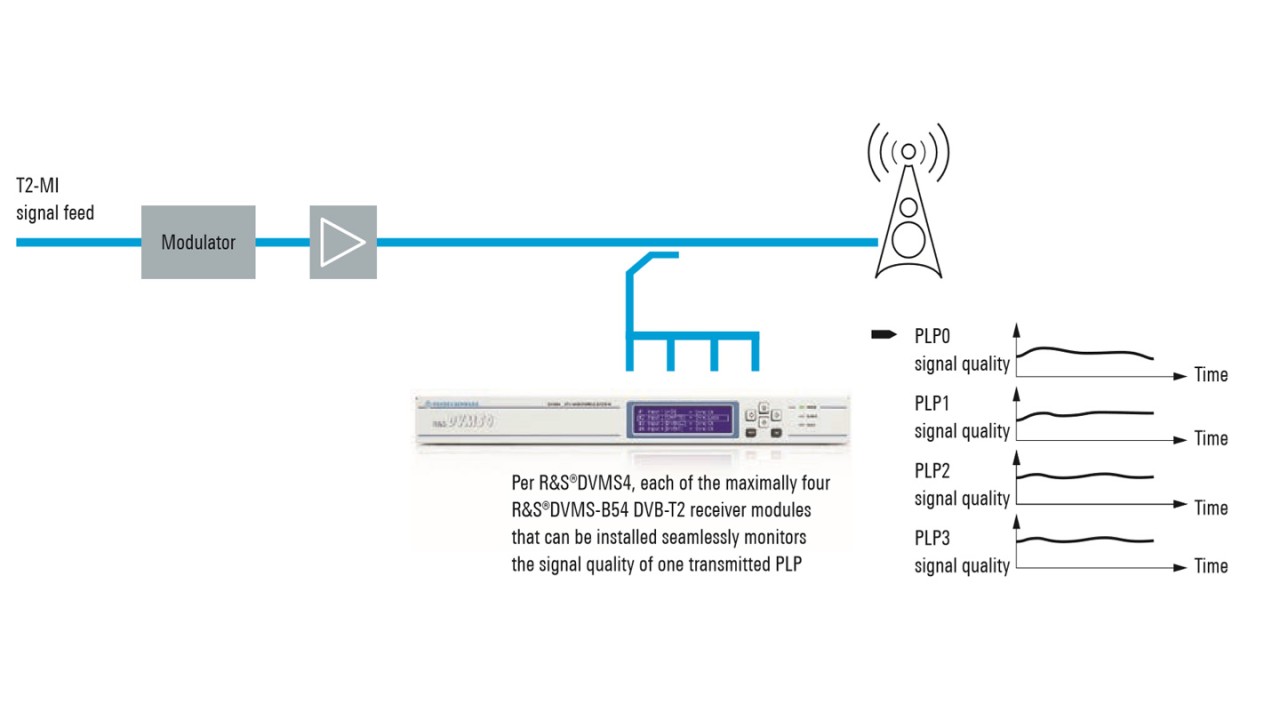Application
The R&S®DVMS4 can be equipped with up to four DVB‑T2 receiver modules (R&S®DVMS‑B54) to provide seamless, parallel monitoring of all PLPs in a broadcast channel. Operators can instantly respond to any errors or failures and reliably detect even sporadic short-term errors.
The individual PLPs can also be monitored sequentially using a single receiver module, which is the more costeffective solution and can also be implemented with the more compact R&S®DVMS1. The R&S®Scheduler software supports the configuration and control for sequential mode. The operator can define the sequence and monitoring periods for any number of PLPs on the clear-cut user interface. Results are displayed in tabular form. They can be recorded and made available to network management systems via the instrument's SNMP interface. If a problem is found in a PLP during sequential analysis, the R&S®DVMS1 can be configured so that the monitoring period will be automatically extended to allow the source of the interference to be captured. In sequential mode, the blind time for each PLP increases with the number of PLPs being monitored. Errors occurring during the blind time go undetected, since during this time another PLP is being analyzed or switchover is taking place between two PLPs. This slows down operator response in the event of an error and makes it more difficult to detect short-term errors. Plus, signal quality is not fully documented.
Parallel and sequential monitoring can be combined for an optimal trade-off between error detection reliability and cost. For example, a dedicated receiver module can be used for seamless monitoring of the PLP carrying the vital live transmission, while two further modules sequentially monitor two PLPs each. This configuration requires only three receiver modules instead of five and yet ensures a reasonably short response time in the event of an error.






